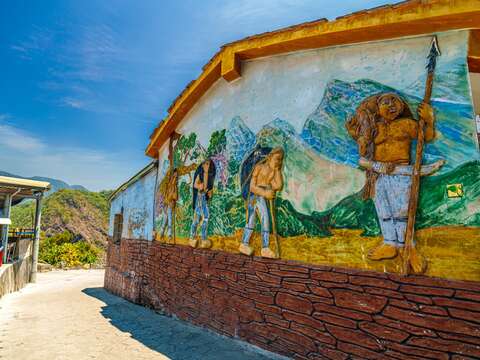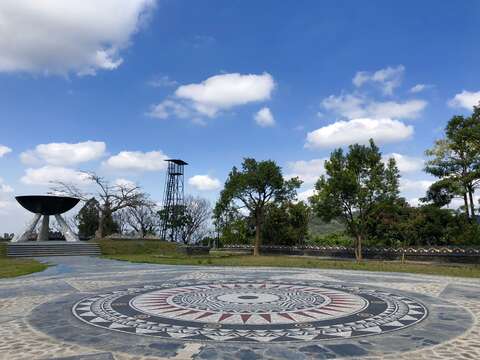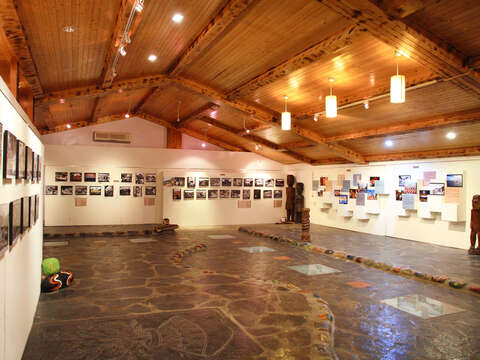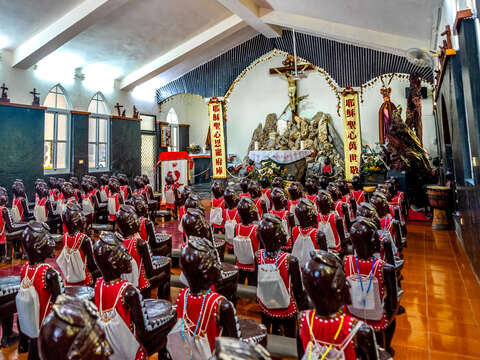One-day Rukai Tribe Tour
Posted Date:2024-08-19
Updated:2024-09-26
Popularity
296Travel days:
One-day Tour
Category:
Natural、Religious tourism
Introduction
Wutai Township is part of the Rukai tribal zone. Begin with the Guchuan Tribe and Rainbow Bridge Fish Watching Path, then head to the Shenshan Church and first Indigenous pathway- the stone slab alley art path, and finally to the Sandimen Dimoer Park. The smooth, progressive design of this plan will gradually speak to you of the lifestyle, culture, and traditional spirit of the Rukai.
Sacred Heart of Jesus
The church was built with slate stones and has several special features. One of them is the human-shaped bench carved by the local indigenous people. Human sculptures forming the bench all look to their right-hand side, or the direction from which sunrises, implying hope. Another special feature is a beehive inside the church, which symbolizes solidarity, characteristic of the local indigenous tribe, who work and live together in a tribe like bees in a beehive that protects them.
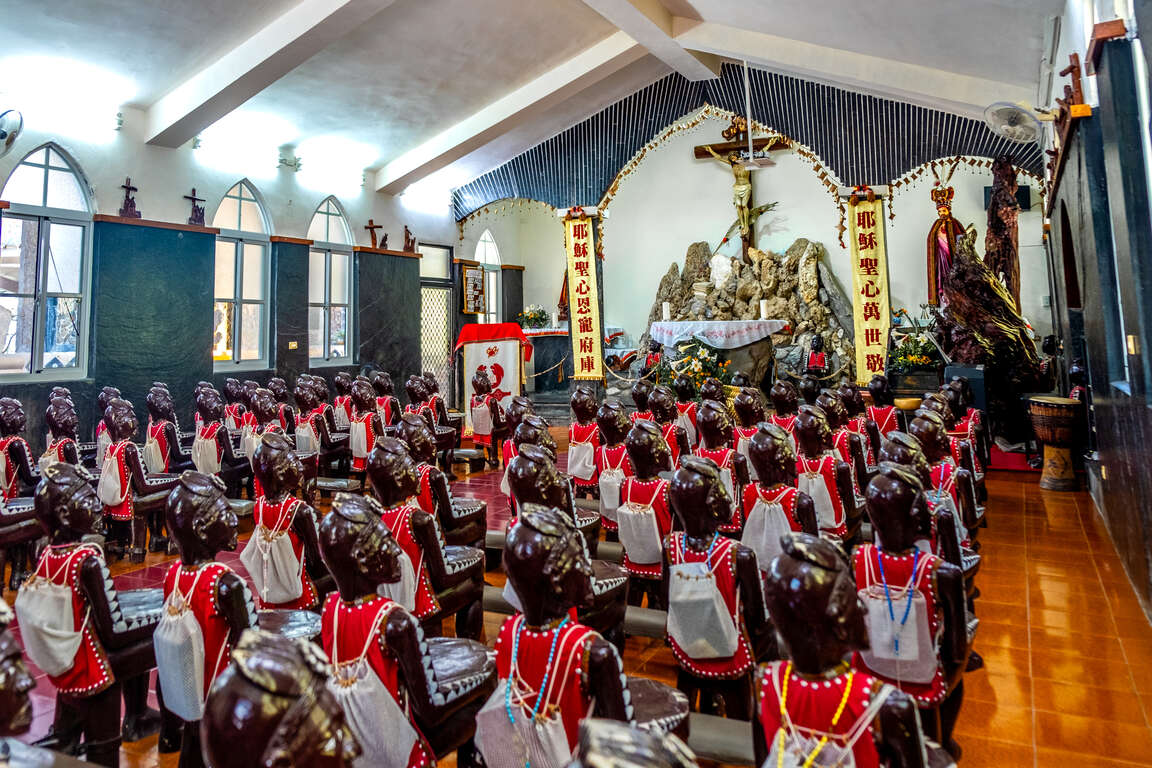
Yanban (Slate) Lane
The Slate Stone Alley can be found in the Wutai Tribe. As its name shows, the alley is paved with slate stones. The 500-meter alley mimics the way a Deinagkistrodon slithers and is decorated with clay pots on both sides. Traveling on the alley, visitors can follow road signs decorated with lily, Deinagkistrodon, and clouded leopard totems, as if they were on an adventure.
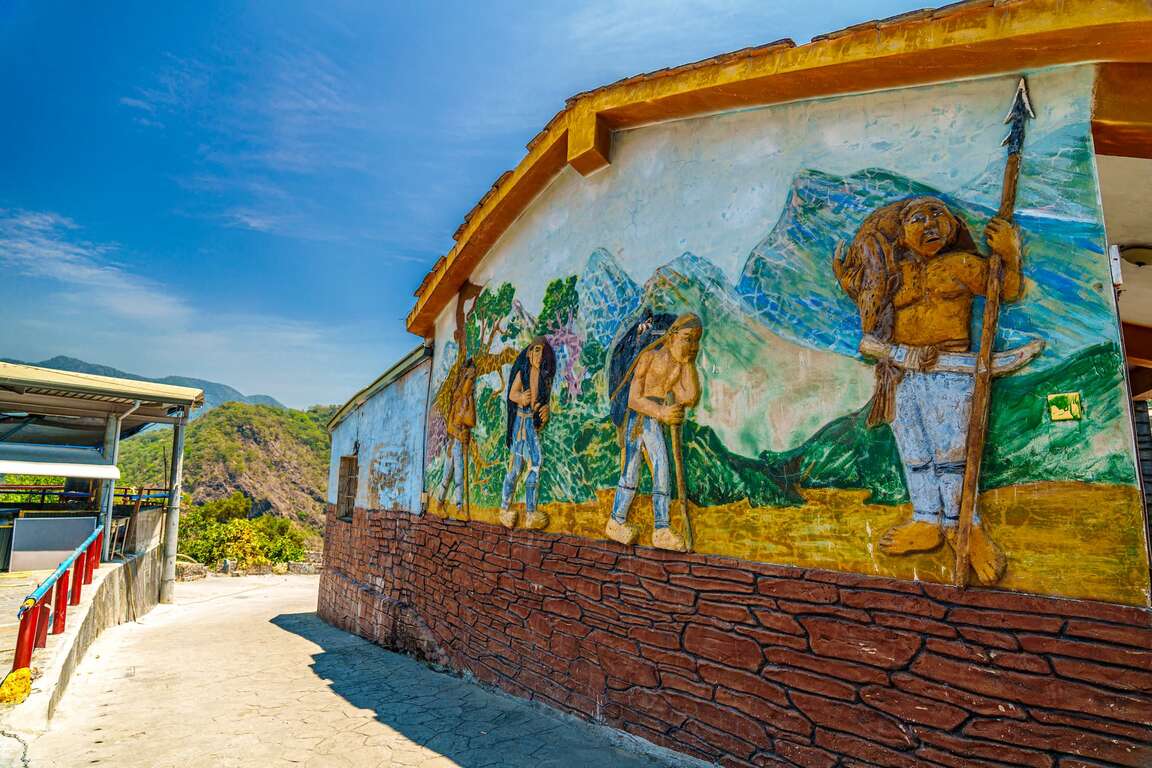
Dimoer Park
Timur means "people of the sun" in the Paiwan language and is the indigenous name for the Sandi Village.The park attracts tourists with its landmarks, the Theater of Life, and the Totem and Hearth of the Ancient.
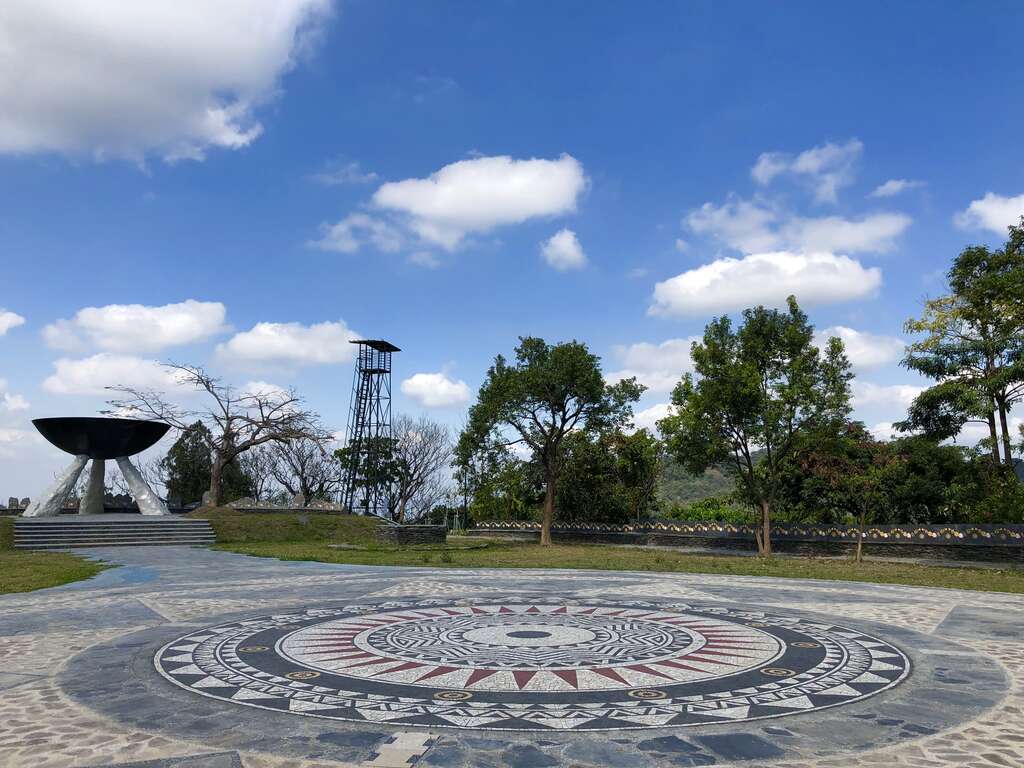
Sandimen Culture Hall
The Sandimen Cultural Center can be found in Zhongshan Park right across the Sandimen Township Office. It is where a shrine from the Japanese colonial era used to be. The center is designed to look like a traditional slate stone house, reflecting the culture of the local indigenous community.
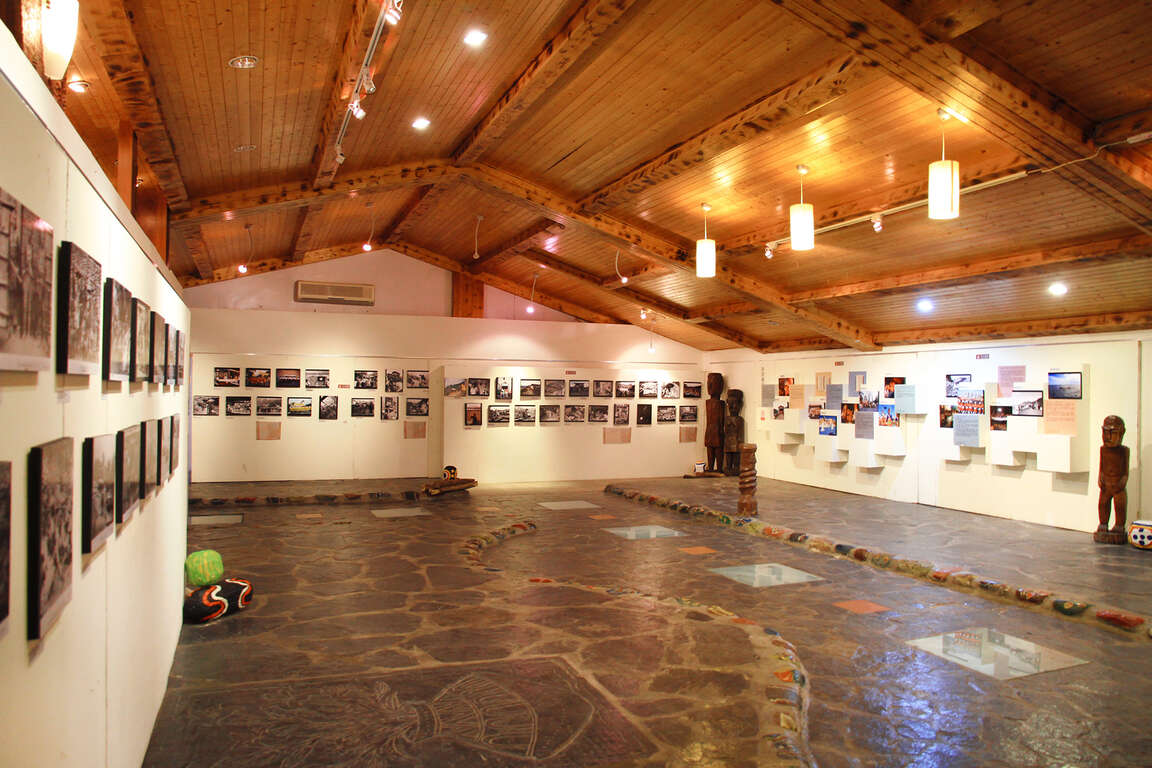
Sacred Heart of Jesus
The church was built with slate stones and has several special features. One of them is the human-shaped bench carved by the local indigenous people. Human sculptures forming the bench all look to their right-hand side, or the direction from which sunrises, implying hope. Another special feature is a beehive inside the church, which symbolizes solidarity, characteristic of the local indigenous tribe, who work and live together in a tribe like bees in a beehive that protects them.

Yanban (Slate) Lane
The Slate Stone Alley can be found in the Wutai Tribe. As its name shows, the alley is paved with slate stones. The 500-meter alley mimics the way a Deinagkistrodon slithers and is decorated with clay pots on both sides. Traveling on the alley, visitors can follow road signs decorated with lily, Deinagkistrodon, and clouded leopard totems, as if they were on an adventure.

Dimoer Park
Timur means "people of the sun" in the Paiwan language and is the indigenous name for the Sandi Village.The park attracts tourists with its landmarks, the Theater of Life, and the Totem and Hearth of the Ancient.

Sandimen Culture Hall
The Sandimen Cultural Center can be found in Zhongshan Park right across the Sandimen Township Office. It is where a shrine from the Japanese colonial era used to be. The center is designed to look like a traditional slate stone house, reflecting the culture of the local indigenous community.

Photos
